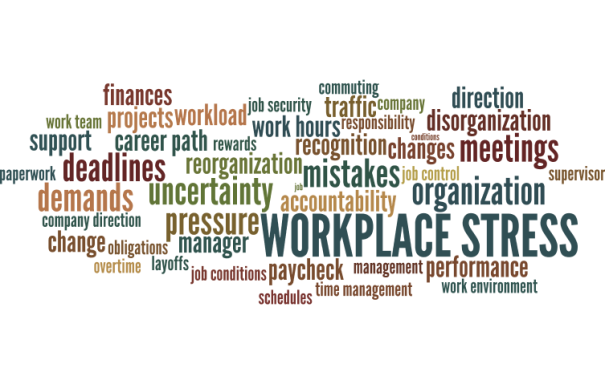Workplace Stress, job insecurity, and personnel issues pile up and overwhelm employees, lowering their levels of satisfaction. The negative consequences of stress are so severe that the World Health Organization has declared it a worldwide epidemic. While many people have attempted to compile all-encompassing lists of stress-reduction techniques, recent research have proven that there is no such thing as a one-size-fits-all solution.
Employee-environment fit should be the major priority in the workplace. If it’s a good fit, the employee will most likely be at ease. A bad fit adds to the tension and stress. We need to analyze our people and the settings we create for them as managers and businesses. We need to make sure that our office meets our employees’ concept of “non-stressful,” not just what we imagine it to be.
We offer a few broad suggestions for reducing workplace stress, but make sure you personalize them to your specific team. Put these concepts into practice, and keep in mind that the most effective techniques begin with leadership’s example.
1. Promote workplace health
Exercise and a healthy lifestyle are two of the most effective ways to combat professional stress. Employees’ minds are diverted from the stress of their jobs by exercise, allowing them to concentrate on the task at hand. It also boosts mood by increasing endorphin synthesis, the feel-good neurotransmitters in the brain.
- Encourage staff to go for a lunchtime walk.
- Gym subscriptions should be subsidised.
- Once a month, bring a yoga instructor into the office.
- Organise a team-based step competition for those who own fitness trackers.
- In the office, provide healthful snacks.
When employees believe you are concerned about their health, they feel valued. According to Peapod.com, 66 percent of employees were extremely or very delighted when their company stocked the refrigerator and cabinets on a daily basis, and 83 percent said having healthy and fresh snack alternatives was a significant advantage. Keeping fresh fruit or cartons of yogurt in the refrigerator might go a long way with staff.
2. Revamp the habitat.
The environment is a major source of stress. Consider every component of your workplace environment and what it does (or doesn’t) for your employees’ well-being. Employee engagement can be influenced by simple factors such as the quality of the coffee or the height of the cubicle walls.
Change the office’s color scheme, add more plants, or get new silverware. Consider installing a ping pong or foosball table if you have the space. This will help employees to divert their attention away from their stress for a few minutes. Employees will be less stressed as a result of any modifications that increase their enjoyment.
3. Allow for flexible hours and remote working.
You hired your staff because you believe they can do their jobs properly and on time, so give them the opportunity to prove it. Your office should not feel like a prison, but rather a location where you can get things done. Make it clear to your staff that the quality and timeliness of their work, not the time they punch the clock, define their job.
Allow your staff to work from home, and give them some leeway in terms of start and end timings. This flexibility boosts employee morale, and the policy demonstrates that you trust them enough not to babysit them.
4. Encourage social interaction
Employees spend a significant amount of time together, and the more at ease they are, the les s stressed they will be. Expectations and communication barriers are broken down when coworkers get to know one another, lubricating the wheels for future interactions.

5. Schedule some quiet time
You won’t be able to totally prevent stress, but you can try to reduce it once it occurs. Ascertain that your staff have access to a break area.
According to our findings, more than 80% of disengaged and hostile employees would prefer to take stress-relieving breaks, such as a nap, massage, or compulsory break. A tiny room, a lounge area at the end of the corridor, or even an outside seat might provide a welcome respite from the daily grind. Consider lengthier, retreat-style vacations, which can accomplish the same goal.
Consider introducing “No Meeting Mondays” or something similar if your company can afford it, which effectively blocks off time for employees to focus on individual tasks rather than becoming mired down in meetings or overwhelmed by a large workload.
6. Provide therapy on-site or over the phone
Many organizations have also started offering therapy to employees as a means to help them cope with stress; according to a recent study, over half of workers felt they required assistance learning how to deal with the challenges of their jobs. This method, which can be used in or out of the office, in groups or individually, can help employees prepare for the stress that will inevitably come their way.
7. Give your employees a pat on the back
Employees enjoy receiving praise for a job well done, and recognizing their accomplishments leads to a significant increase in engagement. Because each employee has a distinct personality, be careful of how and when to recognize them. Some employees prefer a card on their desk or a personal thank you, while others prefer a call-out at a meeting or praise in a company-wide email.
Your employees will appreciate that you are aware of their accomplishments and wish to share them with others, regardless of how you choose to recognize them. This makes individuals happier and more at ease, lowering their stress levels.









Leave a Reply